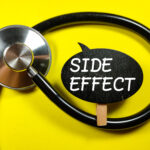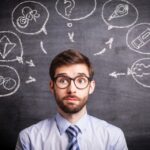Developing emotional self-awareness is all about gaining insight into how and why we feel the way we do. A key part of the process is identifying your personal emotional triggers – the people, places, situations or thoughts that tend to elicit certain feelings. With practice and reflection, you can learn to recognize these triggers and respond to them consciously rather than reactively.

Content
What are Emotional Triggers?
Emotional triggers are internal or external factors that set off emotional responses, sometimes disproportionate to the actual event. Common triggers include conflict, criticism, perceived threats, past hurts, and feelings of lack of control or uncertainty. Triggers activate our “fight or flight” stress response and pull us out of a state of emotional balance.
Why Identify Your Triggers?
Recognizing what pushes your buttons allows you to:
- Prepare yourself mentally for challenging interactions
- Avoid or remove triggers when possible to reduce stress
- Catch your emotional reactions early before they escalate
- Respond constructively rather than react impulsively
- Gain insight into deeper emotional patterns and wounds
The Process of Emotional Identification
Here are some effective strategies for identifying your personal emotional triggers:
- Track Your Moods – Note your feelings, thoughts, and behaviors after social interactions, stressful events or conflicts. Look for patterns.
- Reflect on Your Reactions – When you notice strong emotions, pause to think about what specifically triggered that response.
- Get Feedback from Others – Ask close friends or family members what types of situations tend to upset you or make you defensive.
- Consider Your History – Think about past experiences that may have shaped certain emotional vulnerabilities like abandonment, criticism, or lack of control.
- Monitor Your Self-Talk – Pay attention to negative thoughts that fuel emotions like “I’m not good enough.” These thoughts could indicate deeper triggers.
- Test Potential Triggers – Gently expose yourself to people or topics you suspect might trigger you, then observe your reaction.
- Be Patient with Yourself – Identifying triggers takes time and self-awareness. Don’t get discouraged if insights come gradually.
Once you gain clarity on your emotional triggers, you can develop strategies to manage them more constructively going forward such as assertive communication, reframing thoughts, or removing yourself from certain situations when needed. The goal is emotional identification leading to increased self-awareness and empowerment over time.
Managing Triggers with Emotional Awareness
With practice, you can short-circuit unhelpful emotional reactions to triggers by catching them early. Some effective techniques include:
- Using deep breathing or other grounding methods when you notice a trigger activating stress responses
- Challenging and reframing negative thoughts fueling the emotional reaction
- Shifting your perspective by considering alternative viewpoints
- Communicating your needs assertively in a calm, solution-focused manner
- Removing yourself temporarily from triggering situations if strongly activated
- Finding healthy outlets like exercise to process intense emotions after the fact
The rewards of emotional self-awareness are well worth the effort it takes to identify your personal triggers. With awareness comes choice – you no longer have to be at the mercy of unconscious reactions. Instead, you can thoughtfully respond in ways that serve your well-being and relationships.

Alina Smith is a health blog author with an interest in the intersection of wellness and mental health. She’s worked as a writer, editor, and communications specialist for various healthcare organizations. Alina has also led projects to improve access to care for underserved populations in both rural and urban settings.














